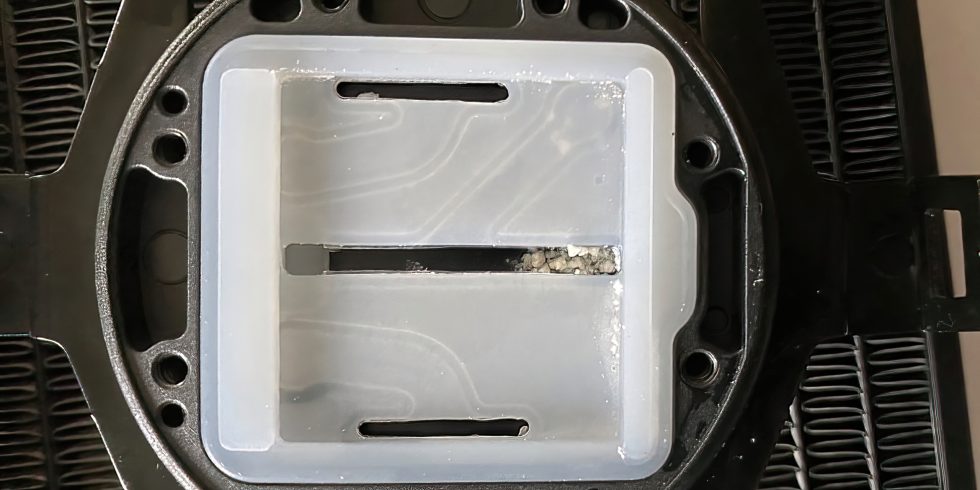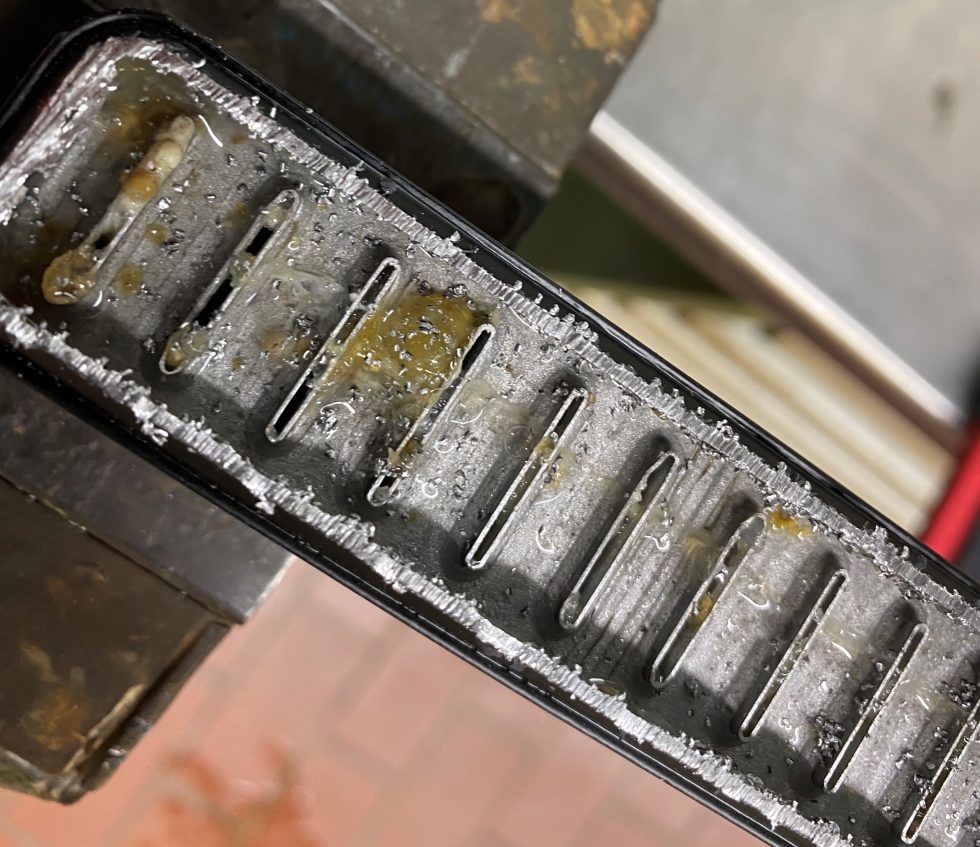I did not make it easy for myself, but worked on this topic for almost half a year. In the first article last year I had already written about clogged radiators and tubes, defective pumps and the theory behind the coolants on their additives. After a very complex analysis with the scanning electron microscope (SEM) and with the help of energy dispersive X-ray spectroscopy (EDX), we were able to get much closer to the actual cause. And yes, the title has nothing to do with the future, but with the present of enormous cost pressure. More on that in a moment.
I originally suspected contamination of the coolant to the point of using cheap “aqua plumbi” (i.e. tap water) instead of a cleaner osmosis reverse filtrate. But in the end, that was just a sidekick. Sure, the liquids used had various residues that had no business being there, but it came much thicker in the end. Nevertheless, I would like to refer at the beginning of course also once again to the part 1 of this tragedy for a better understanding, because these are important basics which are still fully valid:
I would like to skip the crystals from the pictures already known from part 1, as well as the added cold plates. Because these are just the consequences and now, after all the research, I want to get to the real heart of the problem. This is about completely inappropriate production processes at the manufacturer of the aluminum radiators due to cost pressure. These manufacturers are generally never seen in the light of day, and I’m also pretty sure that a company like Apaltek (see Part 1) didn’t even manufacture the radiators themselves, but in turn just bought them from third parties for even cheaper.
Conversely, this also means that all suppliers of rather inexpensive AiO compact water coolers can be affected if they have their products manufactured by contract manufacturers who buy such cheaply made radiators.
Who exactly is affected?
A cooling system that costs 25 USD or less at the time of purchase generally cannot function permanently, because this also has something to do with the manufacturing effort, not just the pure material costs. Possible deficiencies can therefore also be identified by the delivery price free Hong Kong, but the customer rarely knows this. We have evaluated the enormous feedback of the readers after the first part, researched ourselves and also queried the RMA rates via dealers and distributors, as far as this was possible. So far, almost only products from the manufacturer Apaltek have been affected, while Asetek products remain inconspicuous.
This, in turn, presented us with the next problem: namely, since we could find different results for different batches of identical products, it would not be objective to name specific models from specific vendors. Spreading panic would also be counterproductive and lead nowhere. Because if I were to exclude a supplier (not OEM/ODM) now, for example, and their products were affected later anyway, then an explicit purchase warning against individual suppliers or products that are only partially affected would be just as absurd.
Therefore, as always, if you buy cheap, you buy twice. However, if you notice that the cooling performance of your beloved bargain is decreasing, you are welcome to refer to this article for RMA and also contact me by mail. In the meantime, I have spoken with some customers of Apaltek products and sensitized the respective companies with regard to the radiator and coolant problems. If performance drops occur within 3 to 6 months after the first start-up, the product should be returned immediately.
The radiators without flux compensator
How to do it properly, I’ll show you later. Previously, we sawed open not only one radiator of a product, but several. And with that it is also said that it can hit almost every supplier who gets such cheap aluminum radiators installed.
Speaking of flux, do you know what it is? Of course, not in the movie (here they simply used something that the scriptwriter had no idea about, but that sounds nice and complicated), but in the cooling system in question. It is in our case potassium aluminum fluoride, or the flux for short. And a flux compensator is exactly what your AiO is missing. So Hollywood, even if unintentionally, has something to do with your AiO compact water cooling. After all. 😀
Speaking of flux, do you know what it is? Not in the film, of course (here they simply used something the screenwriter had no idea about, but which sounds nice and complicated), but in the affected cooling system. It is potassium aluminum fluoride, or flux for short. And a flux compensator is then exactly what your AiO is missing. So Hollywood, even if unintentionally, has something to do indirectly with your AiO compact water cooling. After all. 😀
The picture above now shows you what you can find if you clamp such a radiator in the vice and emotionlessly cut it once across. We see slime, crumbs and the usual shavings of the separation process, which of course can be neglected. And you can find out exactly what all this means on the next page.



































51 Antworten
Kommentar
Lade neue Kommentare
Urgestein
Urgestein
Veteran
1
Urgestein
Moderator
Urgestein
Veteran
Moderator
Veteran
Urgestein
Urgestein
Urgestein
Urgestein
1
Urgestein
1
Moderator
Alle Kommentare lesen unter igor´sLAB Community →